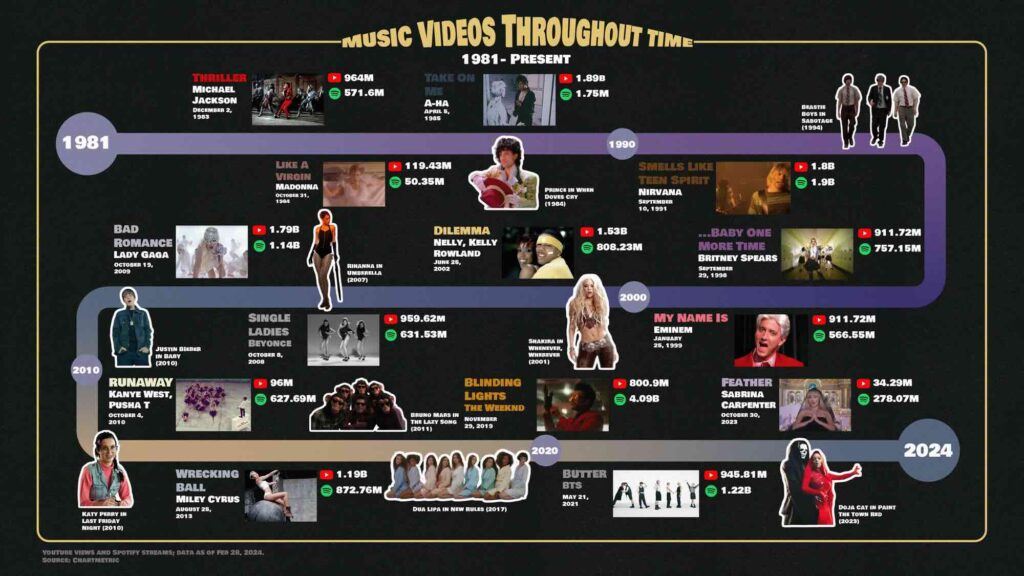Don’t Look Now, But Music Videos Don’t Matter As Much As They Used To
It used to be that if you didn’t have a happening music video, your song wasn’t going to get any traction anywhere. Although MTV set the standard for label acts and their music videos in the 1980s, YouTube eventually picked up the slack in the 2000s after MTV moved to teen angst dramas. That said, there’s some evidence that music videos aren’t as necessary for all artists to have as they once were, at least in some genres.

Chartmetric looked at this subject closely and found that the golden age of music videos was actually during the 2010’s, when releases by Luis Fonsi, Ed Sheeran, Maroon 5 and Katy Perry were seeing views that regularly topped 1 billion by quite a bit. In fact, Luis Fonzi’s 2017 track “Despacito”still holds the record for the most viewed music video with 8.37 billion views.
Not All Genres
According to Charmetric, “When looking at the most streamed tracks on Spotify in 2023, 36 out of the top 40 tracks released between 2022 and 2023 had accompanying music videos. On average, these videos garnered 374M views, whereas the tracks themselves accumulated an average of 1.1B streams. This resulted in an average gap of 731M between the number of views on the videos and the number of streams on Spotify.”
It found that audiences for pop music now prefer to get their music in bite-size streams from TikTok and Reels, or are consuming the entire track via Spotify rather than via a music video.
But that doesn’t apply to all music genres. Latin music videos on YouTube have consistently remained popular over time without seeing the same fluctuations that pop music has. Another genre where the music video is still the primary driver for consumption is K-pop, where a well-produced video means everything to the success of the release.
The Reason
Is there a reason for this trend? Chartmetric seems to have its finger on the music consumer pluse. It says, “. . this evolution in music video popularity is part of a broader cycle, reflecting the ever-changing landscape of pop music. Major labels face criticism for prioritizing viral sensations over talent, as they once did back when MTV was in its prime. As a result, the industry is suffering from a lack of artist development, with platforms like TikTok providing rapid exposure before artists are fully prepared. On the other hand, pop music fans still value traditional music videos for their artistry, however, recent ones are criticized for being uninspired and low-budget, making it challenging for artists to innovate while keeping audiences engaged.”
For many artists, the de-emphasis on the music video will be a giant relief. Most artists view video production as a necessary burden piled on top of their music production. Artists tend to want their music to do the talking, and a video could easily change the intended message of a song without any of the participants realizing it.
That doesn’t mean you should sell your video production equipment however. The music video is still a useful tool, and every artist wants their songs to be available on as many platforms as possible. Despite the data, the music video is the only way to ensure that becomes a reality.

